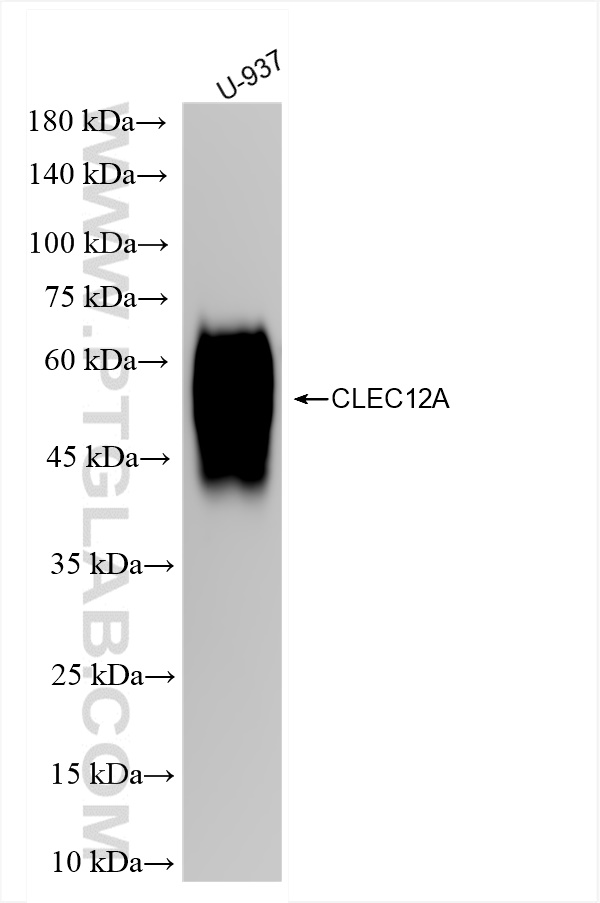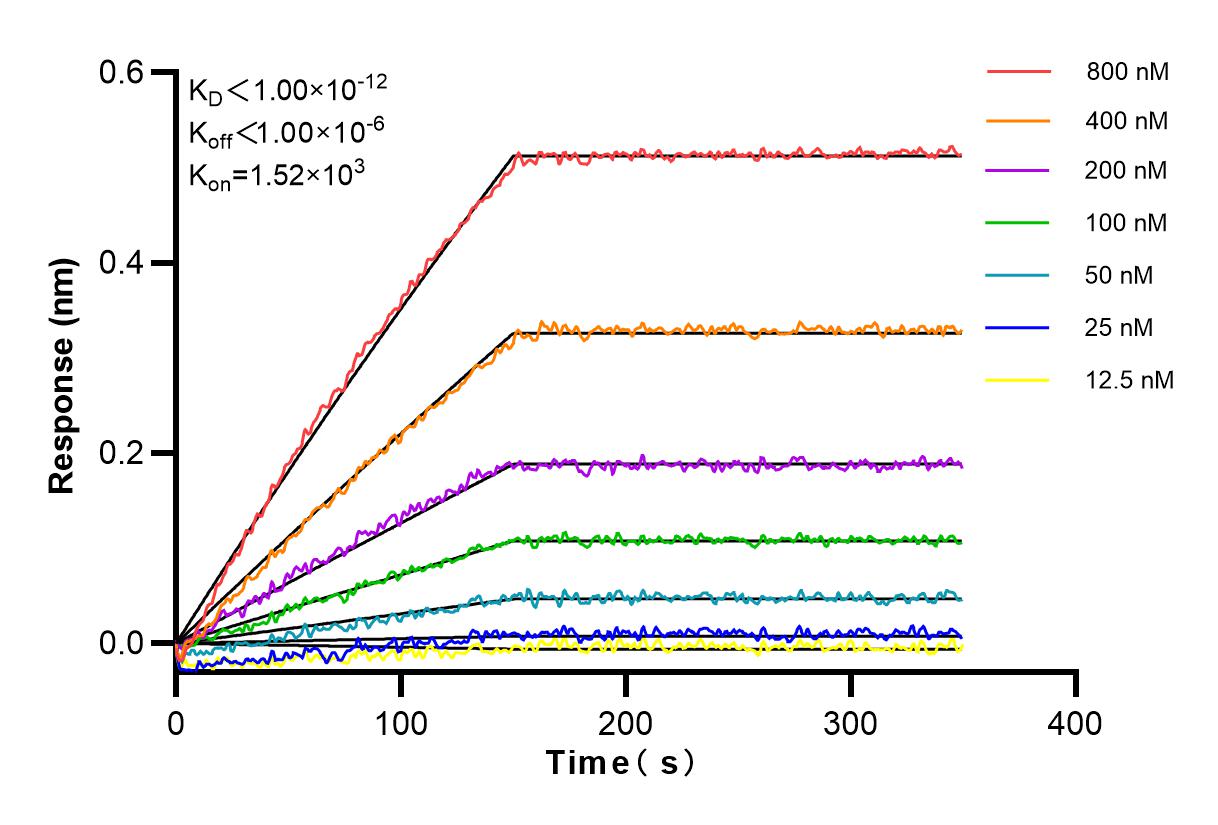验证数据展示
经过测试的应用
| Positive WB detected in | U-937 cells |
推荐稀释比
| 应用 | 推荐稀释比 |
|---|---|
| Western Blot (WB) | WB : 1:5000-1:50000 |
| It is recommended that this reagent should be titrated in each testing system to obtain optimal results. | |
| Sample-dependent, Check data in validation data gallery. | |
产品信息
83680-5-RR targets CLEC12A in WB, ELISA applications and shows reactivity with human samples.
| 经测试应用 | WB, ELISA Application Description |
| 经测试反应性 | human |
| 免疫原 | Fusion Protein 种属同源性预测 |
| 宿主/亚型 | Rabbit / IgG |
| 抗体类别 | Recombinant |
| 产品类型 | Antibody |
| 全称 | C-type lectin domain family 12, member A |
| 别名 | CLL-1, CLL1, CLL 1, CD371, C type lectin like molecule 1 |
| 计算分子量 | 31 kDa |
| 观测分子量 | 55-75 kDa |
| GenBank蛋白编号 | BC126291 |
| 基因名称 | CLEC12A |
| Gene ID (NCBI) | 160364 |
| RRID | AB_3671282 |
| 偶联类型 | Unconjugated |
| 形式 | Liquid |
| 纯化方式 | Protein A purfication |
| UNIPROT ID | Q5QGZ9 |
| 储存缓冲液 | PBS with 0.02% sodium azide and 50% glycerol , pH 7.3 |
| 储存条件 | Store at -20°C. Stable for one year after shipment. Aliquoting is unnecessary for -20oC storage. |
背景介绍
CLEC12A, also known as CD371, MICL, DCAL-2 or CLL-1, is a type II transmembrane glycoprotein and a member of the C-type lectin superfamily (PMID: 30401586). This protein, which contains a single C-type lectin-like domain and a cytoplasmic immunoreceptor tyrosine-based inhibitory motif (ITIM), is related to LOX-1 and Dectin-1 and is variably spliced and highly N-glycosylated (PMID: 14739280). Its ITIM sequence recruits the tyrosine phosphatases SHP-1 and SHP-2 to negatively regulate Syk signaling. In humans, CLEC12A is mainly expressed on myeloid cells, being found on monocytes, granulocytes, macrophages and DC subsets, and at lower levels on CD4+ T cells (PMID: 32477350). The observed molecular weight of CLEC12A is between 40 and 75 kDa, which is much higher than the predicted molecular weight due to glycosylation (PMID: 14739280).
实验方案
| Product Specific Protocols | |
|---|---|
| WB protocol for CLEC12A antibody 83680-5-RR | Download protocol |
| Standard Protocols | |
|---|---|
| Click here to view our Standard Protocols |

